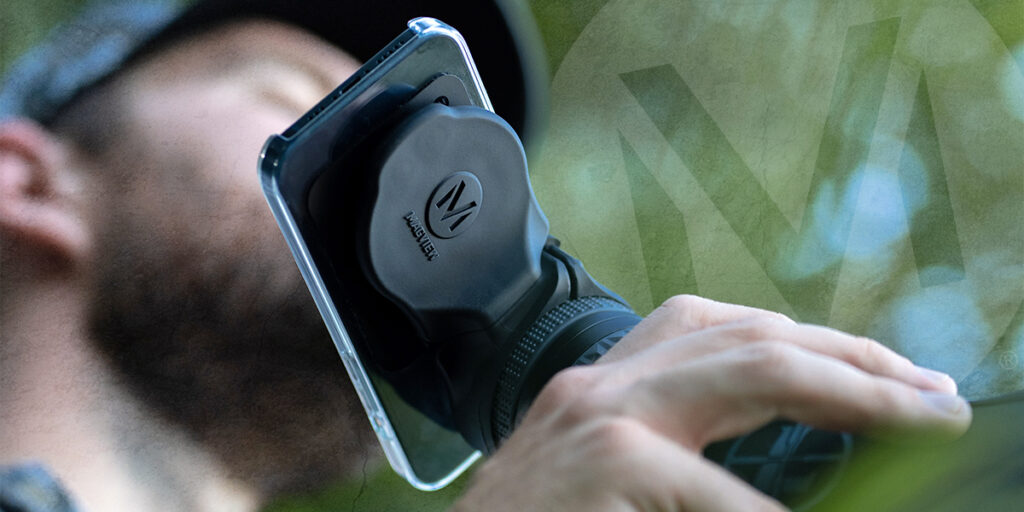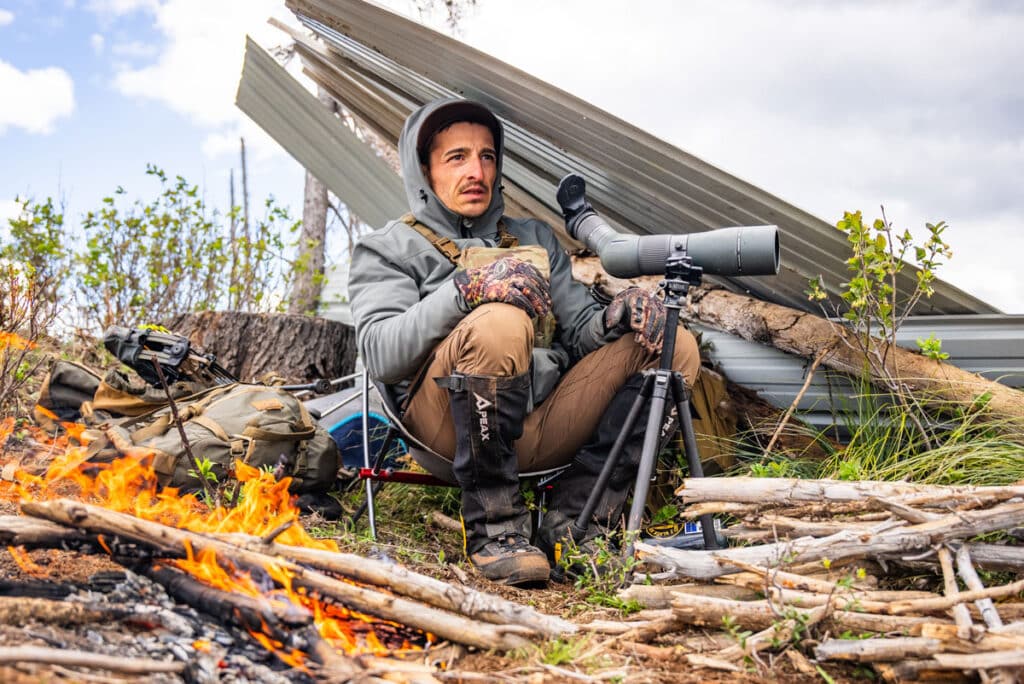Spring is a time of transition in the mountains of the American West, a beautiful transformation of the landscape occurs when snow melts giving way to blooming wildflowers and vegetation. Some years it is a gradual change leaving small pockets of green like polka dots on a white blanketed background. Other years the change takes place rather quickly. Either way this rapidly changing environment plays a very important role in the spring bear hunting season. This makes spring one of the best times of the year to capture epic photos and video using MAGVIEW® digiscoping products.

Timing is important.
One major challenge of spring bear hunting is the transition from winter snow to warmer weather. Too early and you may find the road blocked by a snow drift trying to get to the area you e-scouted. Too late and you may miss the peak time of bears on the move looking for food sources. The right timing can also help avoid peak hunting pressure that comes with nicer weather. This is especially difficult to manage if the unit or area you are hunting is a long distance away. The unpredictable nature of weather highlights how important pre season scouting is. Locating several points of interest in different areas and different altitudes will provide a contingency plan is weather is not cooperating.
How to increase chances of spotting spring bears.
While there are many different strategies for hunting black bears in the spring, a popular technique is to glass and observe areas as snow is beginning to melt, causing patches of green grass and wild flowers among frozen hillsides. These small pockets can lead to greater success in spotting bears on the move as it concentrates potential food sources. This style of hunting requires long periods of viewing one or several areas from a high vantage point. High quality optics like 10x binoculars and a spotting scope that attach to a tripod make these long glassing sessions much easier. Some choose to use higher power binoculars in place of a spotter, 15x binoculars are popular for this role.
What is “Glassing”?
When the term “glassing” is used in the context of hunting, it refers to using magnified optics like binoculars or a spotting scope to scan an area for animals. This technique can be very useful in situations where a hunter would like to be able to keep tabs on a large area that would not be practical/possible to cover on foot. Once an animal or promising area is observed, the hunter can physically go to that location. The major takeaway is that glassing lets optics do some of the work so your boots don’t have to.

With so much time being spent using optics, it is the perfect time to capture images and video from the hunt. Spring is a great time to view deer and elk, along with any other wildlife that may be roaming the same mountains as bears. Those patches of green grass and flowers act as a beacon for wildlife, and even if there is no observable animals present, the wildflowers and other flora are worth viewing. The landscape itself can offer dramatic photo opportunities utilizing MAGVIEW products like the S1 or B1 phone adaptors. Discovering new ways to stay engaged using optics during the spring keep you viewing target areas. The longer you watch an area the greater the chances you may see that bear you were hoping for.

